Indicators for weighing applications typically feature a large, easy-to-read display, simple navigation buttons or a keypad, a power source (either an AC adaptor, mains or batteries), and a communication port. Some models also include a mounting bracket for desk stand or wall installation.
Digital scale indicators designed for analog load cells send an electrical current through the load cell and measure the returning signal. The indicator then converts this signal into a digital weight reading. For digital load cells, the scale indicator receives weight data directly from the load cell or sensor. This data is automatically displayed on the indicator and some models can transmit the data through a wired connection, such as RS-232 or RS-485.
Some advanced weighing indicators can include process control, data storage, statistical analysis, and networking, facilitating weight data collection and analysis for quality control and production tracking.
Accurate weight measurement is important in some companies to ensure efficiency, compliance, and quality control. In manufacturing, it helps to maintain product consistency, reduces waste, and meets Australian regulations. The food industry relies on it for portioning, labelling, and minimising giveaway whilst ensuring safety. Healthcare and pharmaceuticals use precision weighing for medication formulation, patient dosing, and device calibration. In a retail environment, accurate weighing guarantees fair pricing and legal compliance through NMI. Transportation and logistics depend on accurate weights to prevent overloading, optimise fuel use, and ensure accurate billing. Agriculture can use weight measurement for livestock monitoring, crop pricing, and feed management. Universities and research laboratories need it for experiments, chemical formulations, and data integrity. Across all these industries, reliable weighing systems play a crucial role in maintaining operational efficiency, regulatory compliance, and product quality. You can scroll down to learn more, or browse the A&D Weighing range of indicators here.
Do I Need A Platform As Well As A Weighing Indicator?
The platform or basework, is the part of the weighing system where objects are usually placed on for measurement. It contains load cells that detect weight and sends the data to the weighing indicator, which then displays the weight reading. While some systems integrate both components, others use a separate platform and indicator, allowing for greater flexibility in industrial and commercial applications.
So do you need to buy both? It ultimately boils down to your individual needs, but there are several reasons why purchasing a platform and weighing indicator separately could be beneficial. If you already own one component or are replacing an old one, a separate purchase allows for greater customisation. You can choose a platform with the ideal size and capacity while selecting an indicator with the most relevant features. This ensures you get a scale tailored to your needs without paying for unnecessary functions. For example, if you only need basic weighing, there’s no need to invest in an indicator with multiple advanced features. On the other hand, some users may prefer a large, high-capacity platform paired with a versatile indicator capable of handling additional tasks.
Key Features of Weighing Indicators
Modern weighing indicators typically come with some key features. Each of these features plays a crucial role to optimise the indicator’s performance.
- Display Types (LED, LCD, VFD): Weighing indicators come with different display types suited for various environments. LED displays are bright and easy to read in low-light conditions, making them ideal for warehouses or outdoor use at night, though they consume more power. LCD displays offer better visibility in bright environments and use less power, making them suitable for battery-powered or portable applications. Some LCDs also include backlighting for improved readability in darker settings. VFD displays consist of a vacuum tube with a heated filament that can emit bright light with high contrast. However VFC displays are being phased out due to their higher cost, and higher power consumption over LCDs and LEDs.
- Connectivity Options (USB, Bluetooth, RS-232, Wi-Fi): Modern weighing indicators offer multiple connectivity options to streamline data transfer and system integration. USB connections allow quick data transfer to computers or storage devices. Bluetooth enables wireless communication with mobile devices or computers for remote monitoring. RS-232 is a common serial communication port used for connecting with older systems, printers, or external displays. Wi-Fi connectivity allows real-time data transmission over a network, which is useful for cloud-based monitoring or remote access.
- Data Logging and Reporting Capabilities: Some indicators include built-in data storage, enabling users to log weight measurements over time. This feature helps track production trends, monitor inventory levels, and ensure compliance with regulatory requirements. Some models generate reports in formats such as CSV or PDF for easy analysis and auditing. Advanced indicators may also include date and time stamping, batch tracking, and statistical analysis features.
- Integration with Scales and Automated Systems: Indicators can be integrated into automated systems for seamless operation. They can connect with in-line scales, and batching systems in industrial applications. Some models support programmable functions for controlling external devices, such as alarms, sorting mechanisms, or filling machines. This level of integration helps streamline production lines and reduces manual data entry errors.
- Environmental Protection (IP Ratings for Dust and Water Resistance): Indicators are often rated for dust, moisture, and harsh environments using IP (Ingress Protection) ratings. IP65-rated indicators are protected against dust and low-pressure water jets, making them suitable for food processing or industrial use. IP67 models resist temporary water immersion, ideal for environments requiring frequent washdowns. IP69K-rated indicators are designed for high-pressure, high-temperature washdowns, commonly used in pharmaceutical and food industries.
Types of Weighing Indicators and Their Applications
Weighing indicators come in many different shapes, sizes and models, including:
- Basic Indicators: Basic indicators are designed for straightforward weight measurement, providing clear and reliable readings for a wide range of applications. They are commonly used in retail, industrial, and laboratory settings where precise yet simple weighing is required. These indicators typically feature a user-friendly display and basic functions such as tare, unit conversion, and zeroing, making them ideal for general-purpose weighing tasks.
- Counting Indicators: ??Most weighing indicators include a counting function, and allows users to quickly input sample numbers, unit weights, and other data, making them especially useful for handling precise measurements, and managing large inventories. Counting indicators are particularly beneficial for shipping, packaging, and inventory management, as they can efficiently count even small components. Unlike standard indicators with preset sample sizes based on multiples of five, counting indicators offer flexible sample entry, allowing users to input any number within the indicator’s capacity.
- Checkweighing Indicators: Checkweighing indicators are ideal for quality control and food processing. While many weighing indicators include checkweighing functions, there are others that are specifically designed to streamline these tasks. They typically feature visual alerts, such as LED indicators or colour-changing displays, to signal whether a sample is over, under, or within the preset weight limits. Many also include an audible alarm that sounds when a target weight is reached, allowing users to work efficiently without having to constantly check the display.
- Batching Indicators: Batching indicators are essential in manufacturing and automation, where they control the precise dispensing of materials in predetermined quantities. They integrate with automated systems to ensure accuracy in production lines, mixing processes, and packaging applications. These indicators can store batching formulas, manage multiple ingredients, and trigger automated dispensing or alarms, helping to improve efficiency, consistency, and compliance with industry standards.
- Portable Indicators: Portable indicators are designed for mobility, making them ideal for fieldwork and applications that require weighing in multiple locations. Compact and battery-powered, they are commonly used in agriculture, logistics, and on-site inspections where fixed weighing stations are impractical. Many models include durable casings for rugged environments and wireless connectivity options, allowing for seamless data transfer and real-time reporting in remote or outdoor settings.
- Washdown Indicators: Designed for use in harsh environments, washdown indicators are built to withstand dust, humidity, and moisture. They are often housed in durable, easy-to-clean materials, typically stainless steel, and carry a IP65 rating for protection against water and dust. These indicators are ideal for applications in docks, ships, agricultural settings, food processing plants, and other demanding industrial environments. When pairing a washdown indicator with a scale, it’s essential to ensure that connectors and cables are also suited for the conditions.
How to Choose the Right Weighing Indicator
Choosing the right indicator depends on the operating environment, the specific functions required, and of course, your personal preferences. With all that said, here are some key considerations to factor in when researching your next indicator:
- Weighing Capacity & Resolution: Ensure the indicator can handle the required weight range while providing precise readings with the necessary level of accuracy.
- Connectivity & Integration Options: Look for features such as USB, Bluetooth, RS-232, or Wi-Fi to enable seamless data transfer and integration with existing systems.
- Compatibility With Existing Scales & Equipment: Verify that the indicator works with your current load cells, platforms, and weighing systems to avoid compatibility issues.
- Industry-Specific Features: Consider specialised functions, such as washdown protection for food processing, intrinsically safe designs for hazardous environments, or counting and batching capabilities for manufacturing.
- After Service: When investing in equipment like weighing indicators, careful consideration of after-service brands is crucial. A reputable after-service provider ensures the longevity and reliability of your investment through timely maintenance, readily available spare parts, and expert technical support. Choosing a brand with a strong after-service network minimises downtime, maximises operational efficiency, and ultimately protects your bottom line. Neglecting this aspect can also lead to costly delays, frustrating repairs, and a shorter lifespan for your valuable equipment.




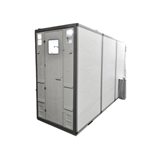


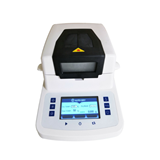

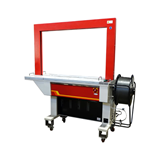
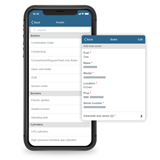


-160x160-state_article-rel-cat.png)

-160x160-state_article-rel-cat.png)
-160x160-state_article-rel-cat.png)
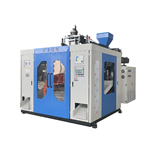



-160x160-state_article-rel-cat.png)


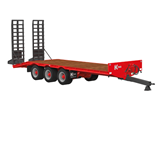


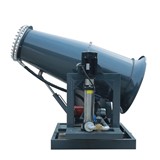


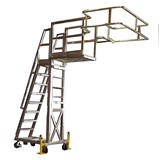

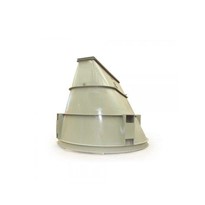
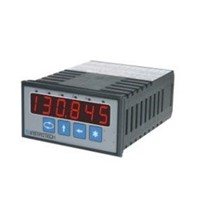

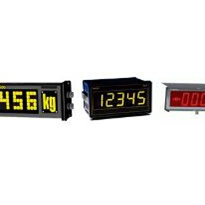

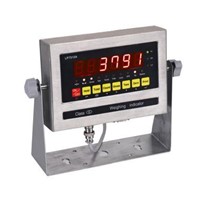
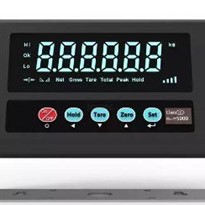
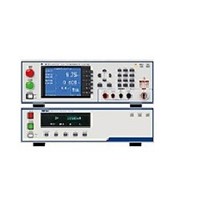


-205x205.jpg)


